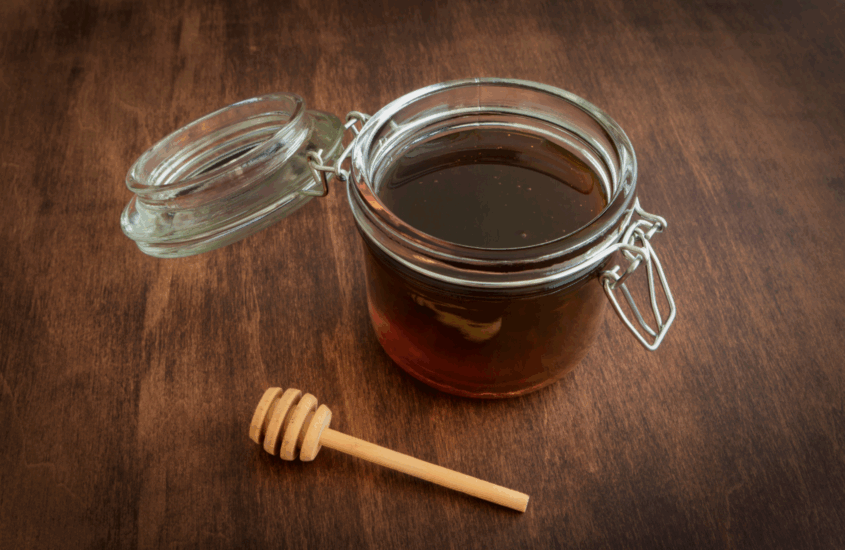Hey Sweet Tooth, Meet Sorghum
AmericanMom Team |
Before candy aisles and corn syrup, there was sorghum — the amber-gold syrup that sweetened biscuits, pies, gingerbread, and morning coffee across farm kitchens in America.
If you’ve never tasted it, imagine something between honey and molasses: smooth, earthy, and a hint of spice and caramel. Sorghum isn’t new, but it’s long overdue for a comeback.
Not Molasses, Not Honey — Something All Its Own
For generations, people called it “sorghum molasses,” but that’s not quite right. True molasses is a byproduct of sugarcane or sugar beets. Sorghum syrup is made by pressing the juice from the stalks of the sweet sorghum plant — a grain crop — and slowly boiling it down until it’s thick and golden brown.
The confusion came because the two syrups looked similar in the jar. But taste them side by side, and you’ll know: sorghum is lighter, fruitier, and layered with flavor.
The Sweetener of the Homestead
Farmers in the 1800s turned to sorghum because it was reliable, high-yielding, and easy to grow — especially during the Civil War, when sugar grew scarce and expensive under Union naval blockades. Sorghum could be pressed and boiled into syrup right on the homestead, no imports or refinery required.
By the late 1800s and early 1900s, sorghum syrup had become the go-to sweetener for families across the South and Midwest who couldn’t afford refined sugar. Harvest time was more than farm work — it was a community event. Neighbors gathered for “sorghum days” in late summer, stripping cane, pressing juice, and boiling it down into syrup. Children licked the sweet foam off paddles, mothers filled jars, and everyone went home sticky, tired, and smiling.
It was more than food. It was tradition.
Why It Belongs in Your Kitchen
- On Biscuits: Drizzle warm syrup over flaky biscuits for the classic farm breakfast.
- In Baking: Adds depth to gingerbread, spice cakes, and cornbread.
- With Meat: Balances barbecue sauces and glazes hams beautifully.
- As a Spread: A spoonful over buttered toast rivals any jam.
And beyond syrup, grain sorghum is a powerhouse too — naturally gluten-free, high in fiber, and versatile enough to be popped like popcorn or milled into flour.
Sweet, Sturdy, and Sustainable
Sorghum is more than a kitchen staple — it’s a survivor. This hardy crop thrives where others give up, standing tall in heat and drought. Its deep roots protect the soil, its growth demands little water, and it flourishes without heavy chemicals. For generations it carried families through lean times, and today it offers a model of resilience — a heritage grain perfectly suited for a modern world.
The Sweet Science
Modern research has validated what our ancestors knew intuitively. In fact, researchers at the University of Georgia found sorghum has antioxidant levels higher than blueberries — proof that Grandma’s syrup was smarter than we knew. Source: https://news.uga.edu/study-finds-that-sorghum-bran-has-more-antioxidants-than-blueberries-p/
Nutritionally speaking, one tablespoon of sorghum syrup contains about 61 calories (similar to honey’s 64) but with more minerals including iron, potassium, and B vitamins. Unlike refined sugar, sorghum syrup retains trace minerals from the plant, making it a more nutritious choice for your sweet tooth.
Ready to Try It? Our Amazon favorites:
- Whole Grain Sorghum — perfect for cooking like rice.
- Popped Sorghum a heritage snack with modern crunch.
- Oberholtzer’s Pure Kentucky Sorghum— old-fashioned syrup straight from the South.
In Your Kitchen:
- Substitute 1:1 for molasses in any recipe
- Replace honey at a 3:4 ratio (sorghum is slightly less sweet)
- Swap for maple syrup in pancakes and waffles
- Try in savory dishes: Mix with apple cider vinegar for salad dressing, or brush on roasted vegetables
Quick Recipe Ideas:
- Sorghum Butter: Mix equal parts softened butter and sorghum syrup for an instant biscuit topper
- Glaze: Combine sorghum syrup with Dijon mustard for ham or pork chops
- Coffee Sweetener: Stir a teaspoon into hot coffee for complex sweetness
- Popped Sorghum: Heat grain sorghum in a dry pan until it pops—natural snack ready in minutes
So, sweet tooth — meet sorghum.
It’s more than just syrup for your biscuits. It’s history in a jar, resilience in the field, and a forgotten flavor ready to shine again. Sorghum tells the story of pioneer kitchens and community harvests, of families who leaned on the land and found sweetness in simplicity. It’s proof that the old ways still have something to teach us — about flavor, about sustainability, and about endurance.
Rediscovering sorghum isn’t just about tasting something new. It’s about remembering who we are, what carried us through hard times, and how the simplest gifts from the land can still delight and sustain.
So go ahead: drizzle it on biscuits, stir it into baking, or brush it on roasted vegetables. With every spoonful, you’re savoring more than sweetness — you’re tasting a piece of America’s story.






